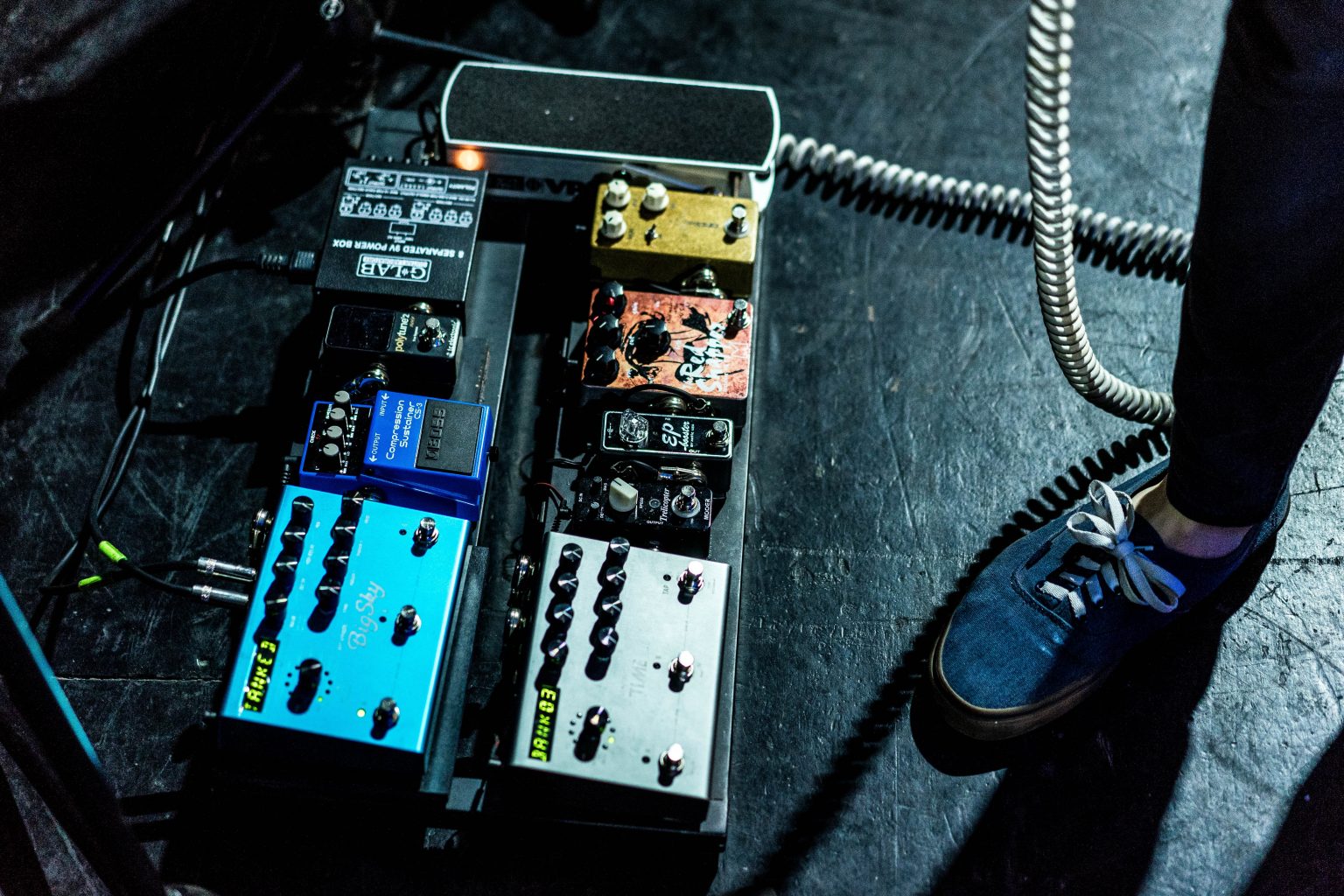Effects are used everywhere in music production. Effects are found inside synthesizers, guitar pedals, and mixers. The sheer number of different effect types can be overwhelming. That’s why I want to give an overview of the different effects used in music production. The practical use of these effects will be covered in feature articles.
Filtering
In the early days of recording, a device was needed to alter the tone of a microphone before it went onto tape. A basic shelving filter was used to amplify or attenuate low and high frequencies.
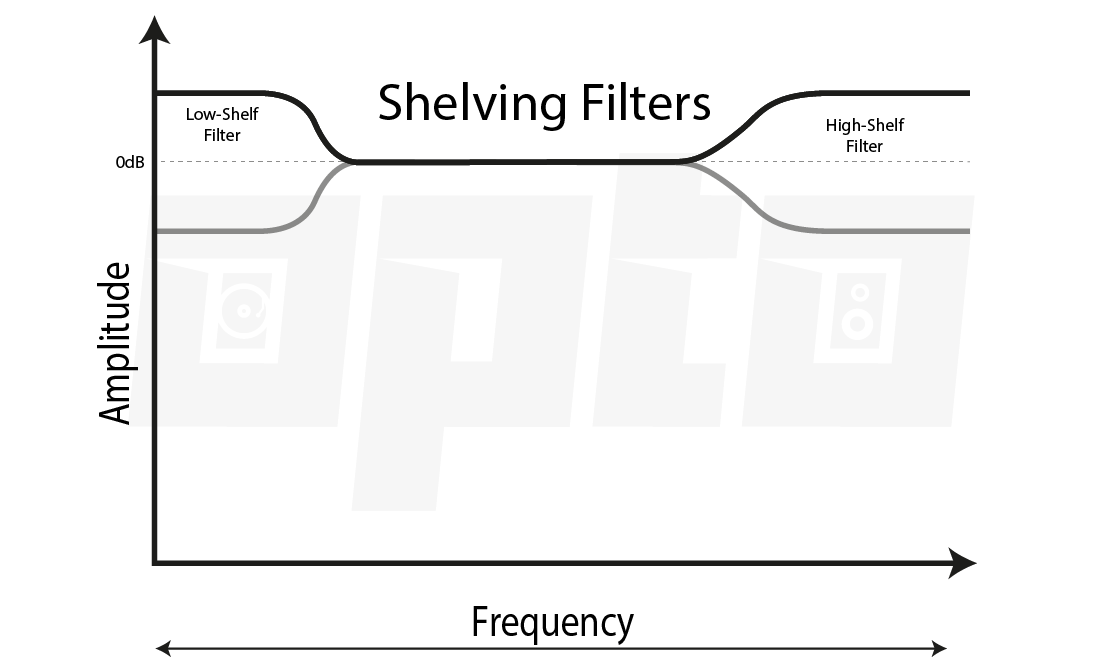
This device evolved over the years to provide us with more bands and a variable frequency range. The EQ, or equalizer, is traditionally used to flatten the frequency response of a recording or playback system.
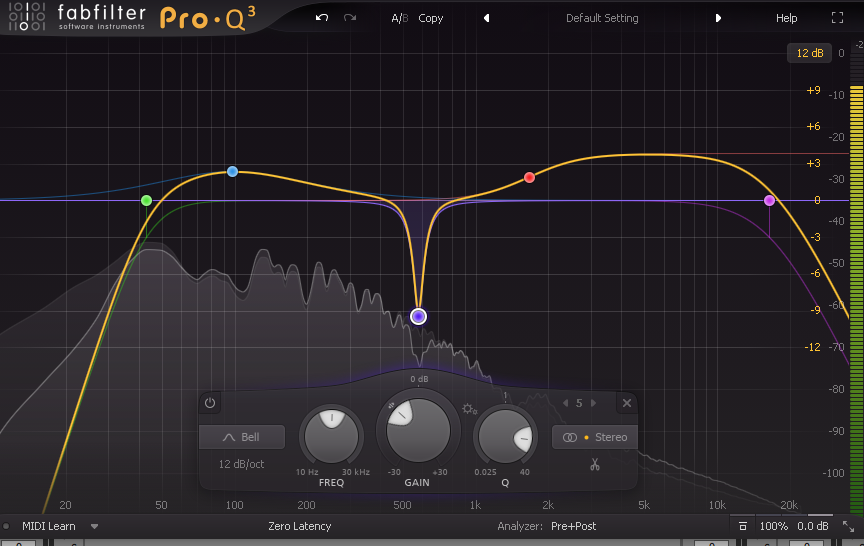
Modern equalizers feature all kinds of filters ranging from low- and high pass filters to shelving filters, peaking filters, and notch filters. We will talk about EQ in more detail later on, just know that is used to shape the frequency spectrum and it’s the most used tool when mixing tracks.
Dynamics
Dynamics: the difference between soft and loud. Classical music has more dynamics than dubstep. Sometimes you want to decrease the dynamic range of an instrument. This can be done with compression. A compressor limits the dynamic range by a selectable amount. The compressor is actually nothing more than an automated volume control. It is similar to a VCA on a synthesizer but this time it doesn’t react to midi notes but to the signal itself.
Compression
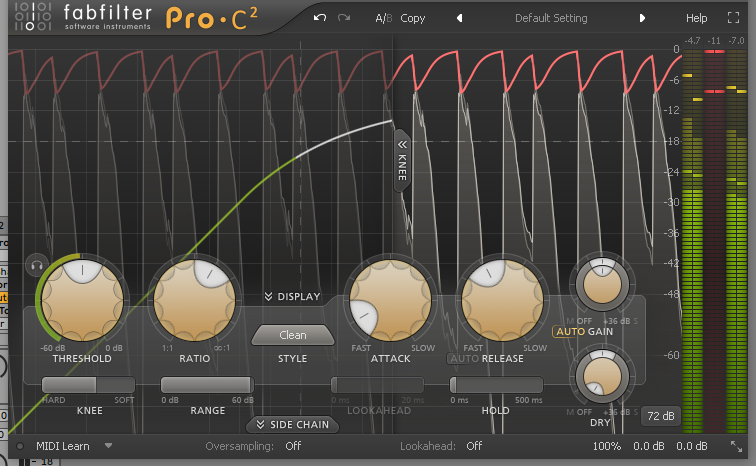
If a signal reaches a certain threshold, the compressor lowers the output volume, and if the original signal sacks below the threshold level the output volume is restored. This results in peaks being lowered, thus the overall dynamic range is decreased. Because the peaks are lowered we can now boost the output level a little bit to perceive a louder signal.
Limiting
Limiting is another type of compression that limits an audio signal to a certain level. Signals can’t go louder than the limiter’s threshold. It act’s like a ceiling, every sound that is louder than this ceiling gets cut off. It’s basically like grabbing scissors and cutting all peaks of a waveform.
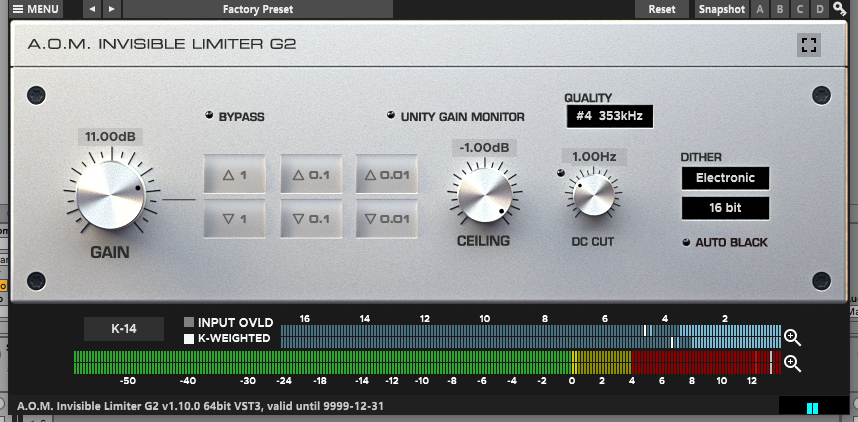
Multiband Compression
Multiband compression is basically regular compression split into bands. So instead of one compressor, you have 3 compressors, one for the low end, one for the mid frequencies, and one for the high end. Multiband compression is often used in mastering to compress the low end of a song separately from the high end for example.
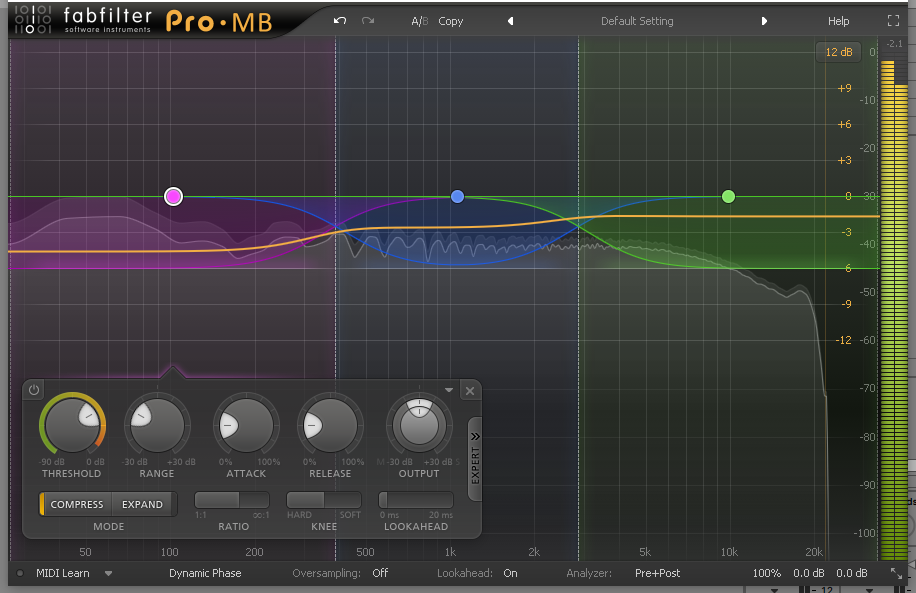
De-Essers
A De-Esser is similar to a multiband compressor but it only compresses one band. This band is around 5kHz and up and reacts to sibilant sounds (‘s’, ‘z’ and ‘f’) of a voice. These high-frequency sounds are often amplified when close-micing a singer and need to be reduced to achieve a more balanced sound.
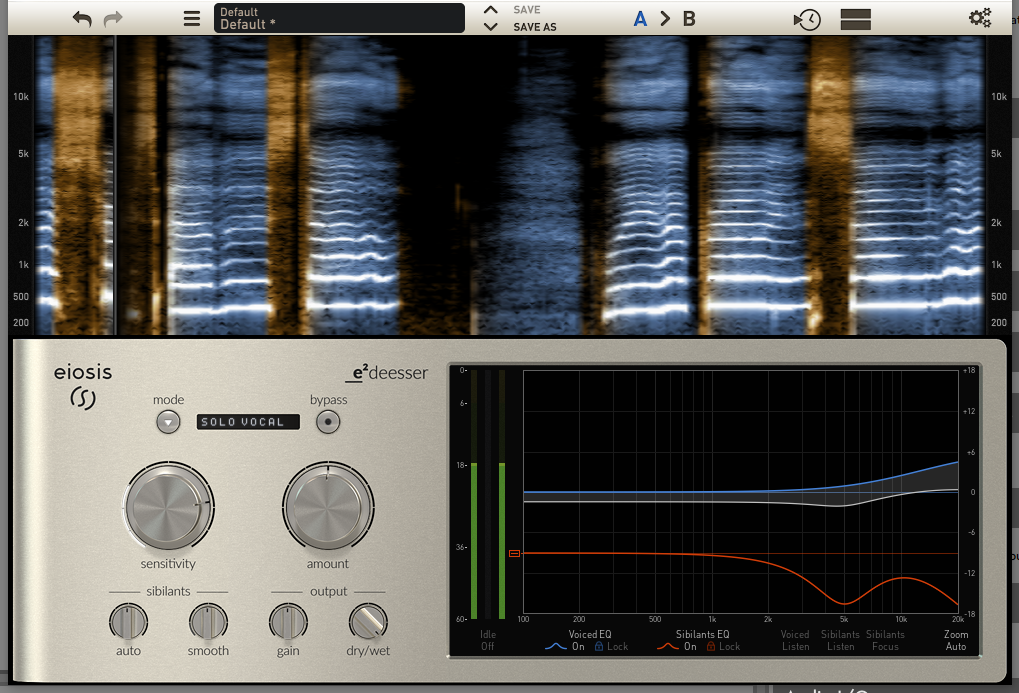
Gates
Gates are used to mute a signal if it passes a certain threshold. It is basically the opposite of a limiter in the way that it removes everything below a set threshold. This is useful if you have an electric guitar recording with lots of noise. A gate can simply lower the volume to complete silence when the electric guitar is not playing. Gates are also often used on toms to only make them sound when they are actually played.
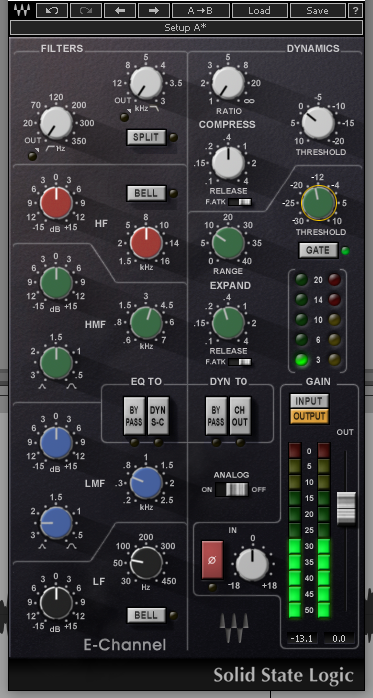
Transient Shapers
Transient shaping is also similar to compression. This device is very simple but powerful to use. It features two knobs. Attack and sustain. It can be used to increase the initial onset or tick on drums for example or to decrease or increase the length of a kick drum or snare.
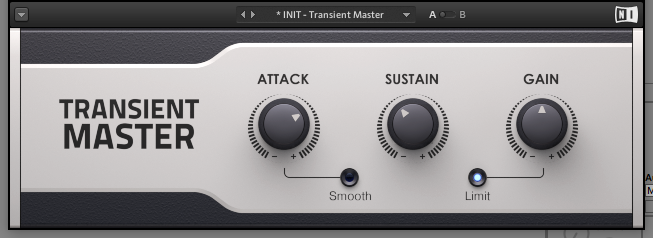
The benefit of a transient designer is that it doesn’t rely on threshold levels, it just looks at the difference between the attack and sustain of a sound no matter if it’s soft or loud.
Delay & Reverb Effects
EQ and dynamic processing are technical tools to correct and shape sounds. Delay and Reverb are creative tools that can be used subtly to create depth in a mix or they can send you onto a trip to space when used more prominently.
Most instruments are recorded close like electric guitars, vocals, and the close mics of a drum kit. Because of the short distance between source and microphone barely any reflections from the room get recorded. But what if you want to give some space to a close-miked recording? That’s where reverb comes in.
Reverberation or, reverb for short, is used to emulate reflections from a real acoustic space. In the early days, recording and mixing, engineers used specially made reverb chambers with walls full of tiles to create the infamous bathroom reverb sound. An instrument was played back through a speaker positioned in the reverb chamber while recording the room reflections with a microphone.
Splate and Spring Reverb
Other mechanical devices were used to emulate room acoustics like plates and springs. By sending an audio signal through a transducer the plate or springs started to vibrate which was then recorded by a pickup.
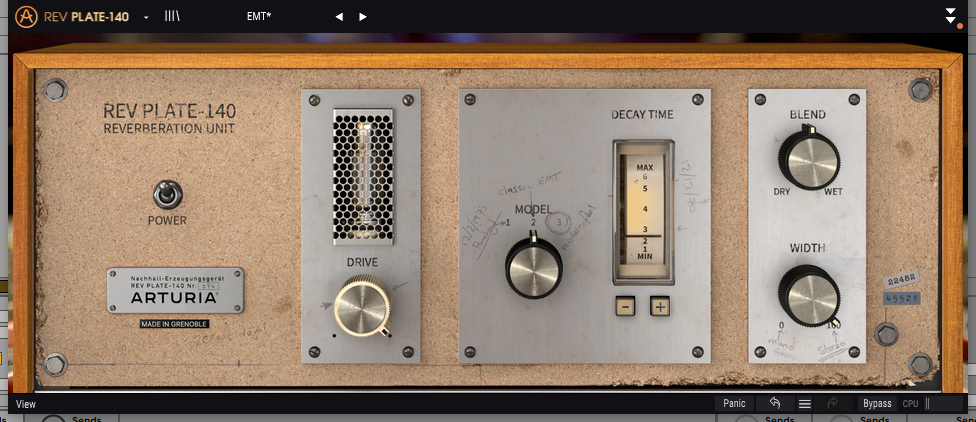
Digital Reverb
In the 80s digital reverbs were introduced. Electronic devices that used algorithms to emulate acoustic spaces or to create new spaces altogether like reverse reverb. All of these different kinds of reverb types are nowadays combined into a single plugin. Parameters like reverb time and room size can be changed to recreate every space imaginable.
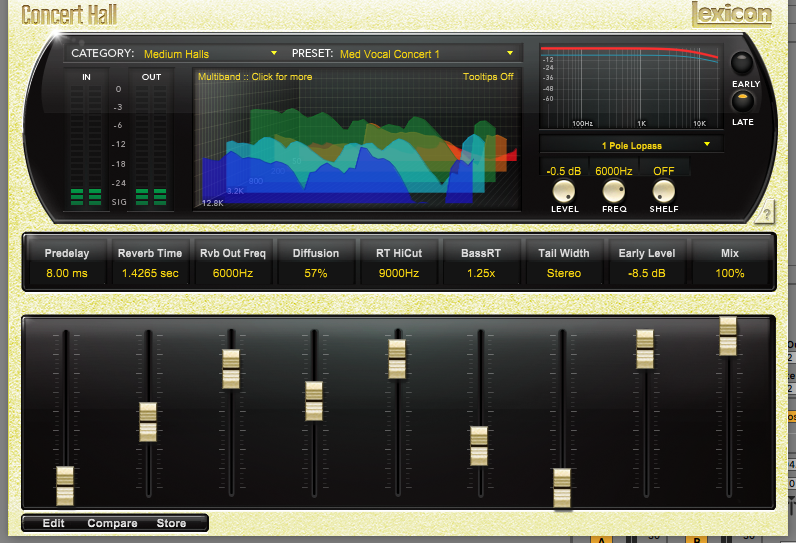
Convolution Reverb
The latest type of reverb technology introduced what is called convolution reverb. Convolution reverb is basically a recording of a physical space that is processed and transferred onto the sound you want to use it on. By using convolution reverb you can emulate recording in the Sidney Opera House or Abbey Road.
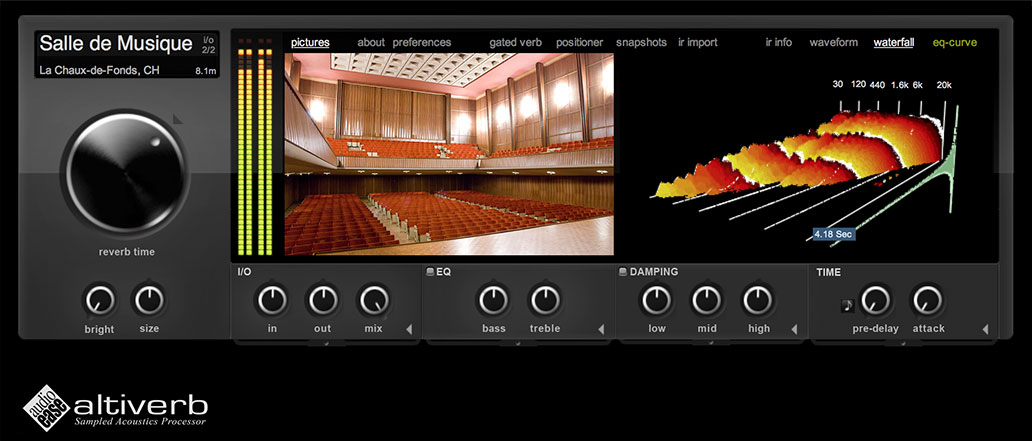
Single Reflection
Where Reverb is emulating a complete space, delay only emulates one reflection. Imagine playing a sound in a room. The sound moves forward and bounces to the nearest wall, to the wall next to it, to the ceiling, floor, and so on. A delay basically emulates the reflection to the wall and back.
Tape Delay
When tape machines were a thing mixing engineers created delays by mixing the direct signal with the recorded signal on tape. Because tape needs time to physically move between the recording head and the play head, a delay resulted. Multiple delays could be formed by sending the delayed signal back to the tape machine to create feedback. This type of delay is often called a slap-echo and is used in many Elvis recordings.
Later on, tape machines were created that featured multiple record heads, allowing the user to select between a range of set delay times.
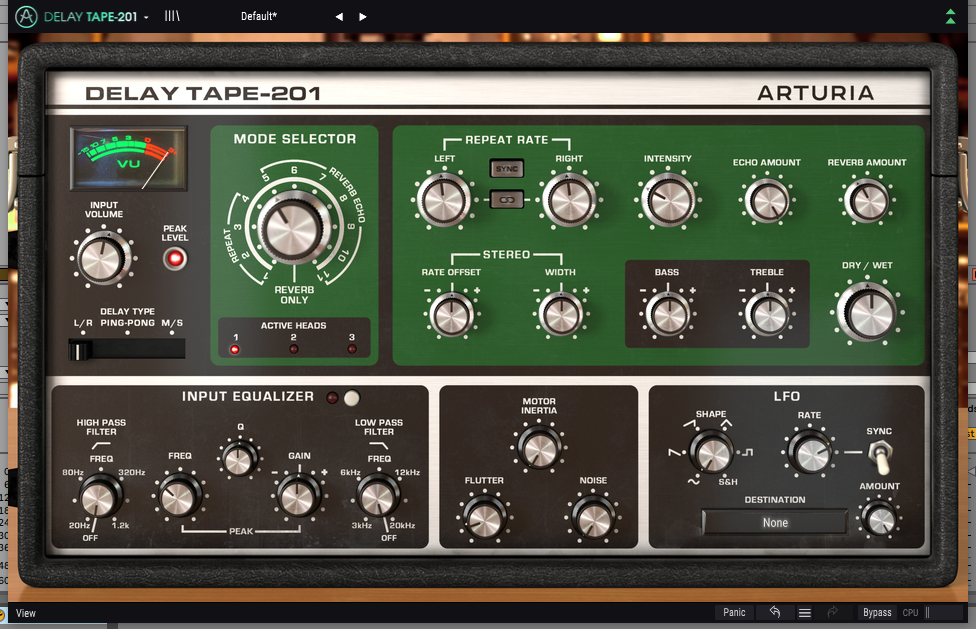
Bucket Brigade Delays
A couple years later, a new type of delay called the bucket brigade delay (BBD) was invented. This is an electronic delay that delayed the signal similar to people passing on buckets to extinguish a fire, a.k.a. the bucket brigade. BBD delays are found in many guitar pedals, and have a warm character because lots of high end is lost in the process. In addition to feedback, delay time could also be changed.
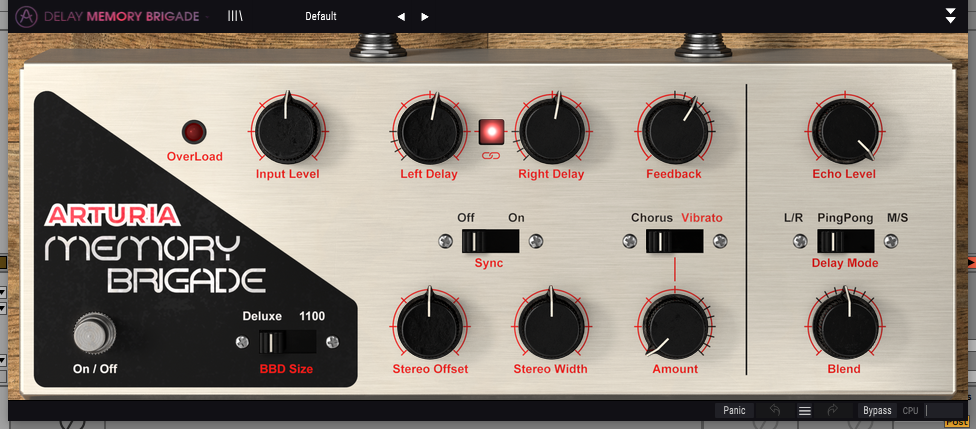
Digital Delay
The last type of delay is the digital delay. Random Access Memory (RAM), was used to store sounds for a short amount of time. With digital delays, it became possible to clock delay times to a musical tempo. Many software delays found in our DAWs emulate classic tape and BBD delays, while others try to be as clean as possible.
Modulation
Most modulation effects are made by taking an extremely short delay (10 milliseconds or shorter) and combining that with the dry (unaffected) signal. Usually, an LFO (low-frequency oscillator) is used to modulate the delay time which adds movement to the sound. Feedback can be applied just like a regular delay to create metallic sounding resonances often found in flangers.
Some modulation effects use two delays and pan one to the left and another to the right to create stereo width as found in most chorus effects. A chorus basically detunes both delays a bit to simulate the sound of a real choir of singers. Chorus effects have a longer delay time than flangers. A phaser has the shortest delay time and basically creates notch filters that move slightly in time. These 3 modulation effects all sound different, so it’s best to try them out for yourself.

Basically, all modulation uses some sort of LFO to modulate a certain parameter. An auto panner is a type of modulation effect that pans the signal automatically between the left and right speaker. An auto filter modulates the filter cutoff with an LFO, a tremolo effect modulates the amplitude of a signal and a vibrato effect modulates the pitch of a signal.

Distortion & Saturation
A sound that is altered by effect processing in any way is actually distorted. If the output of a signal is different than the input, the signal has been changed. Of course, we should differentiate between wanted distortion and unwanted distortion. Some audio processing results in unwanted artefacts that you want to avoid most of the time, such as clipping an AD converter, comb filtering, or aliasing. If we talk about distortion as an effect we usually mean the pleasant effect of overdriving a guitar amp, guitar pedal, or tape recorder.
Saturation
Just like modulation effects, there are various degrees of distortion effects. The most subtle form of distortion is saturation. Tube amplifiers and tape recorders saturate slightly when you send a hot (loud) signal to it. Saturation adds some upper harmonic content i.e. high frequencies and sometimes compresses the sound a little bit as well. A tape recorder can’t record past a certain input level, because the tape starts to saturate, it can’t get magnetized any further. However, there is some room between a clean signal and a maximally saturated signal (headroom) which makes tape recorders and tube amps so useful.
Overdrive
Some tube amplifiers, but also solid-state amplifiers, go into overdrive mode when you increase the input level. An overdrive pedal boosts the guitar input level significantly so the pre-amplifier stage gets pushed to its limits. This results in a type of distortion that is noticeable in both the lower and upper frequencies.
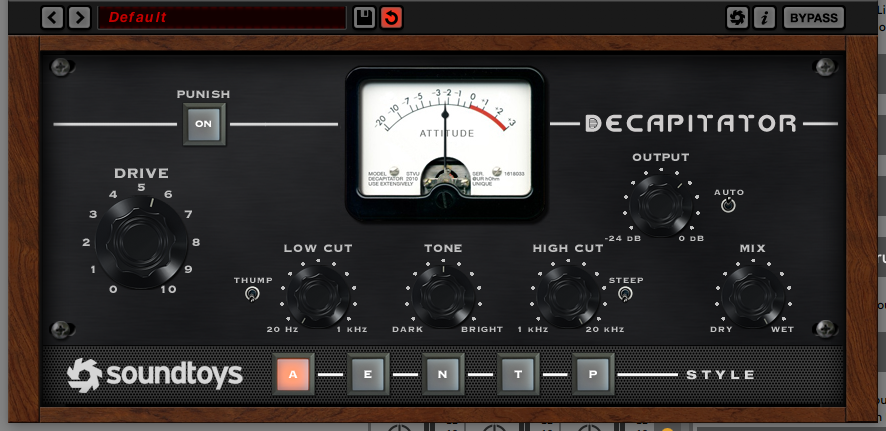
Distortion
We can go one step further and add different types of electronics to create distortion. Note the confusing term. In practice, a distortion effect distorts the signal level even more than overdrive. It boosts the level so loud that it brings up all kinds of nasty noises and buzzes.
Clipping
If you boost the input level even higher you get into clipping territory. Clipping is similar to what a limiter does, it cuts the peaks of a signal. If you send a sine wave into a clipper you get a square wave out of it. While the former types of distortion sound smooth, clipping sounds harsh. Clipping is used as a protection mechanism in audio interfaces. Because digital signals are made of 1s and 0s, the signal can’t get louder than a certain level. Clipping occurs immediately if you pass that level, this is unlike the smooth transition that tape saturation provides. A variation on the clipping effect is soft clipping which has a little more wiggle room between a clean signal and a fully clipped signal.
Gain Staging
Most microphone and line pre-amplifiers transition smoothly from saturation, into overdrive, distortion, and clipping. This is why people like analog microphone pre-amps. Simply by changing the input gain you can get a whole world of sounds out of it. Most pre-amps also feature an output level knob so you can prevent the next piece of gear from clipping at its input level. Keep this in mind in your DAW as well. If you boost the signal level with distortion effects the following plugin in the signal chain such as an EQ can start to clip. Always keep your levels in mind and attenuate were necessary.
Bit Crushing
A digital form of distortion is called a bit crusher. Because digital audio uses samples and bits, distortion occurs if we decrease the number of bits in a signal. It’s like we take a digital photograph and increase its size. At a certain point, you will start to see the pixels. The same applies to audio. By decreasing the bit depth you will decrease the resolution which results in a lo-fi type of sound similar to early samplers which often were 12 or even 8 bit. Most bit crushers also feature a sample rate reduction option. This decreases the resolution of a signal even further and can completely destroy a signal at extreme settings.
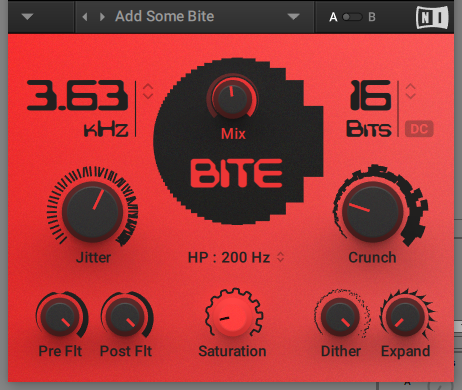
In the up and coming articles, we’ll dive deeper into how you might want to use these effects and the different parameters they offer.

